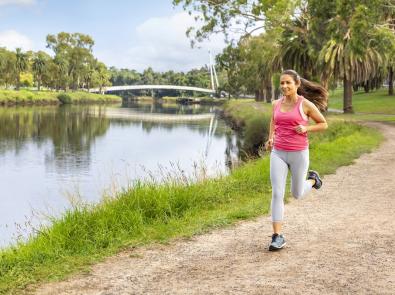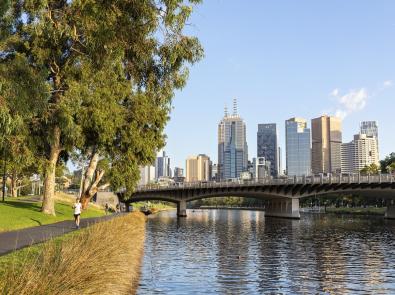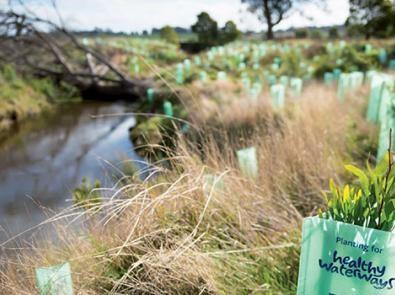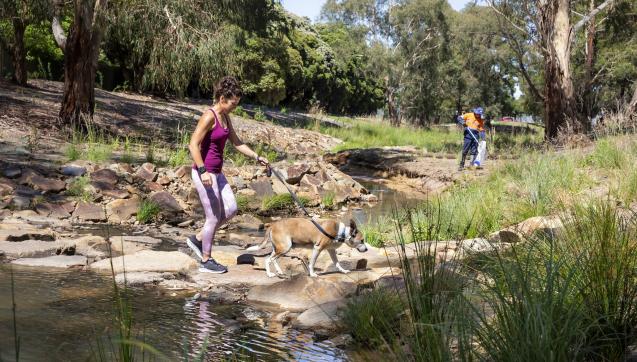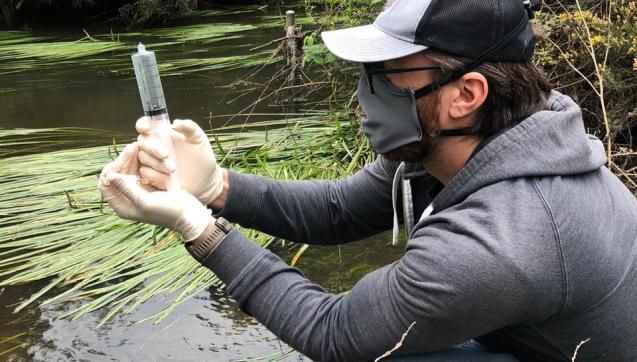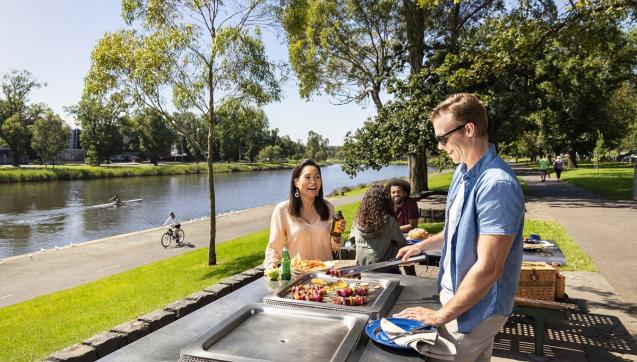At Melbourne Water, we manage 25,000 kilometres of waterways across Greater Melbourne. We also work with our partners to manage 33,000 hectares of surrounding open space: equal to around 13,000 MCG ovals! The work we do today ensures our rivers, creeks and open spaces remain healthy and clean into the future.
Get to know your rivers
Discover the history, geography and wildlife of Melbourne’s key rivers and wetlands with our online guides:
Why waterways matter
Our rivers and creeks provide habitat for more than 1,800 species of native plants and 600 species of native animals. They also supply water to homes and businesses, including the farms that grow our food, and are enjoyable places to visit.
The plants and animals that rely on rivers live together in a delicate balance. However, this can be upset by human activities that change a river’s natural state, sometimes with widespread and destructive results.
Key threats to our rivers include:
- drought and climate change
- taking water for agriculture, businesses and homes
- using more land for farming or building on — this increases the amount of surfaces like roofs and roads that cannot absorb water, which then washes litter and pollutants into our drains and creeks (stormwater pollution)
These threats make life hard for plants and animals, due to:
- habitat loss
- poor water quality
- erosion
- unnatural water temperature or flows
- barriers to migration
- flooding — which impacts people as well.
What we’re doing
We can’t restore every river and creek to its natural state, but we can help protect and improve them. Each year we undertake a significant program of works to achieve this, while balancing the needs of the community, costs and safety.
Our work includes:
- cutting grass
- controlling weeds
- planting native vegetation
- removing litter and debris
- assessing waterway condition (including safety and all abilities access)
- releasing water into rivers to mimic natural river flows (environmental flows)
- making sure councils and land developers include techniques in new houses that capture and clean stormwater (water sensitive urban design)
We also monitor and research waterways to get accurate information that guides our activities, and shows how well these are working. It can take a long time for the positive effects to show — up to 50 years for riverbank revegetation — but we know our works make an impact.
How you can help
There are many ways you can care for your local waterway, such as:
- counting frogs
- building a raingarden
- applying for funding to help with a river health project
